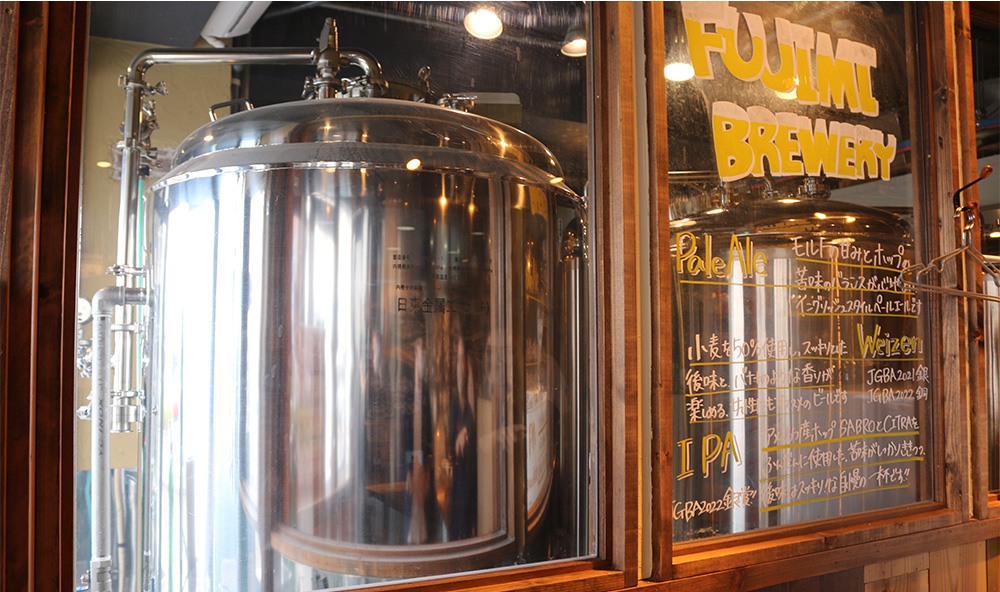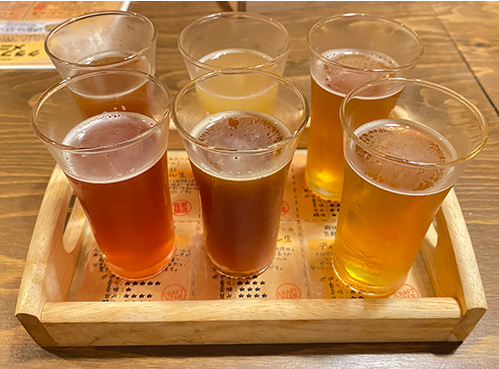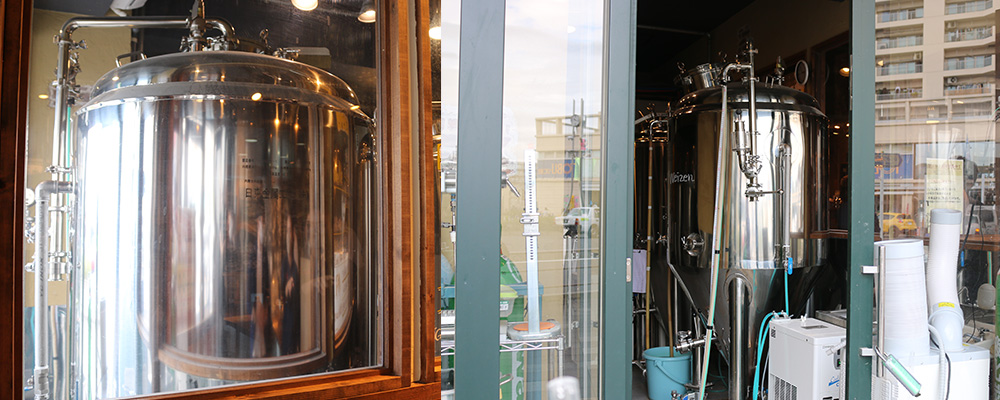
We were able to consult, design, and receive assembly support domestically. They also provided answers to our
questions after delivery, which gave us peace of mind.
Dining Bar Operating Company, Company L

A dining bar operating company that operates 17 stores mainly in Tokyo’s Nerima and Saitama
Prefecture. They also provide support for restaurant startups and opened a craft beer brewery in
2020. In 2021 and 2022, they won a total of five silver and bronze medals at the “Japan Great Beer
Awards,” and they are planning to further expand their beer business in the future.
Originally, they were using two tanks (imported) of about 540L each at full capacity, but they were
unable to meet even half of the demand. Therefore, they decided to introduce fermentation tanks
manufactured by Nitto Kinzoku Kogyo.
This time, we visited the brewing facility in Toda City, Saitama Prefecture, operated by the company,
and spoke with Mr. H about the business situation and the introduction of the products.
First-time Beer Brewing – Craft Beer Brewing as a New Business
– Please tell us about the background and history of this establishment.
This establishment was opened about 2 years ago, around the same time we obtained our brewing license.

Initially, our company focused on developing dining bars in the Nerima area. However, we were considering new
business opportunities and decided to venture into craft beer brewing.
– Were there any challenges in starting the brewing business from scratch?
First, we had to learn the brewing process to obtain a beer license. However, since we had no prior knowledge, we
studied for a year with the guidance of consultant Lina.
In the beginning, it was more about following instructions rather than fully understanding what we were doing. It
was quite challenging, but recently we have started to grasp it better.
Initially, we wondered if we could really make beer, but as we studied beer brewing, we realized that small-scale
brewing like ours is actually quite common.
We Decided on Japanese-Made Products for Peace of Mind, Even if They Were a Bit Expensive

The 600L fermentation tank we delivered this time. Designed to fit perfectly in the available
space.
– Originally, it seems that you introduced tanks made overseas, right?
Yes. We introduced two 540L tanks. We were able to produce just over 1000L, but with 17 stores in total, just one
store consumes about 300L, so supply could hardly keep up with demand.
– So, you started considering new containers?
We heard about Nitto Kinzoku Kogyo’s containers from Mr. Lina, the consultant we mentioned earlier.
While the first containers we introduced were made overseas, we felt more secure and certain with the route that
Japanese-made ones take to reach us. Above all, they are easier to communicate with, providing a sense of
security when expressing our wishes during design or when we have issues to discuss. Ultimately, we decided that
even if it’s a bit expensive, it’s better to have a product made in Japan that we can trust.
Additionally, the influence of the coronavirus pandemic and the situation in Ukraine made it uncertain how much
time it would take to transport from overseas, and we were worried about how much the shipping cost would be.
That was another reason.
– You mentioned “it’s a bit expensive,” did you have the impression that our products were costly?
Indeed, overseas products are cheaper, but in the end, the shipping cost is hundreds of thousands.
Besides, if it’s Nitto Kinzoku Kogyo, we can consult domestically and have it immediately reflected in the
design, and they also do the assembly in the brewery. They answered various questions, and we were able to leave
it to them with peace of mind, so we didn’t have the impression that it was very expensive.
It was good that the sales and technical personnel were very supportive
– We interacted with our technical K and sales F, how was it?
I was surprised at Mr. K’s wild appearance, but I was glad that he was very supportive (laughs).
It was very easy to have direct interaction between me, who is the site manager, and Mr. K in charge of
technology, and financial discussions were conducted between our representative and Mr. F, the sales
representative.
– How has it been after the delivery?
It’s been about two months since the delivery, but due to the heat of this midsummer, we couldn’t use the chiller
well and had to discard all the contents once.
We are currently brewing for the second time while consulting with Mr. K, the technical director. There are still
aspects of the tank’s quirks and characteristics that we have yet to grasp, so it seems like it will take some
time. The difficult and profound part of beer is that you can’t just simply make it. It will require some trial
and error for about a year.
